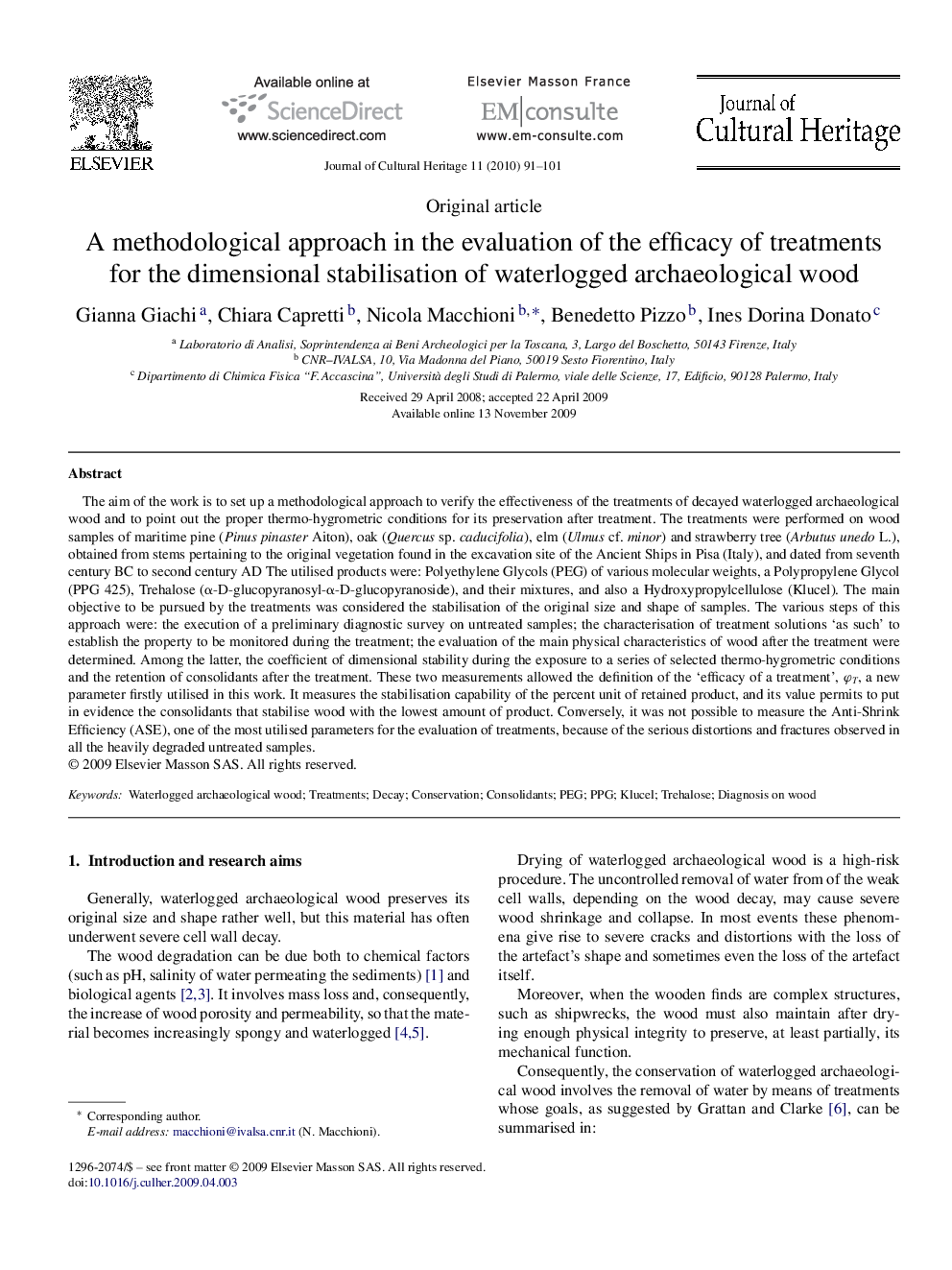| کد مقاله | کد نشریه | سال انتشار | مقاله انگلیسی | نسخه تمام متن |
|---|---|---|---|---|
| 1038469 | 944221 | 2010 | 11 صفحه PDF | دانلود رایگان |

The aim of the work is to set up a methodological approach to verify the effectiveness of the treatments of decayed waterlogged archaeological wood and to point out the proper thermo-hygrometric conditions for its preservation after treatment. The treatments were performed on wood samples of maritime pine (Pinus pinaster Aiton), oak (Quercus sp. caducifolia), elm (Ulmus cf. minor) and strawberry tree (Arbutus unedo L.), obtained from stems pertaining to the original vegetation found in the excavation site of the Ancient Ships in Pisa (Italy), and dated from seventh century BC to second century AD The utilised products were: Polyethylene Glycols (PEG) of various molecular weights, a Polypropylene Glycol (PPG 425), Trehalose (α-D-glucopyranosyl-α-D-glucopyranoside), and their mixtures, and also a Hydroxypropylcellulose (Klucel). The main objective to be pursued by the treatments was considered the stabilisation of the original size and shape of samples. The various steps of this approach were: the execution of a preliminary diagnostic survey on untreated samples; the characterisation of treatment solutions ‘as such’ to establish the property to be monitored during the treatment; the evaluation of the main physical characteristics of wood after the treatment were determined. Among the latter, the coefficient of dimensional stability during the exposure to a series of selected thermo-hygrometric conditions and the retention of consolidants after the treatment. These two measurements allowed the definition of the ‘efficacy of a treatment’, φT, a new parameter firstly utilised in this work. It measures the stabilisation capability of the percent unit of retained product, and its value permits to put in evidence the consolidants that stabilise wood with the lowest amount of product. Conversely, it was not possible to measure the Anti-Shrink Efficiency (ASE), one of the most utilised parameters for the evaluation of treatments, because of the serious distortions and fractures observed in all the heavily degraded untreated samples.
Journal: Journal of Cultural Heritage - Volume 11, Issue 1, January–March 2010, Pages 91–101